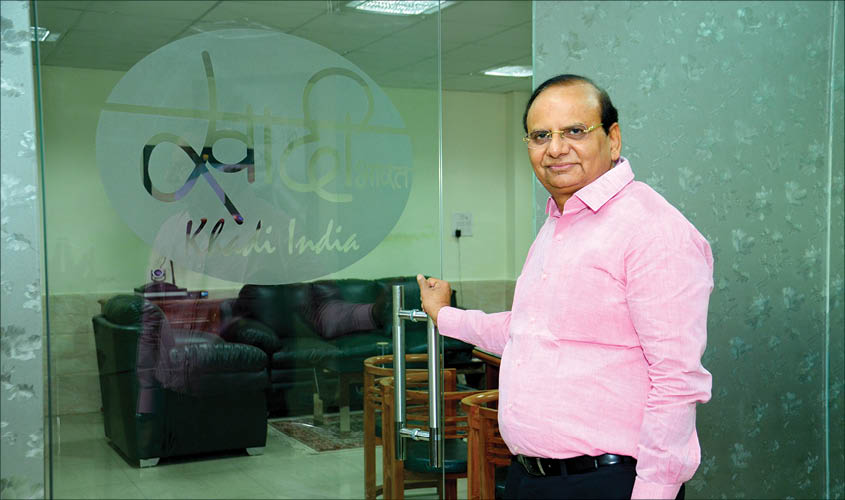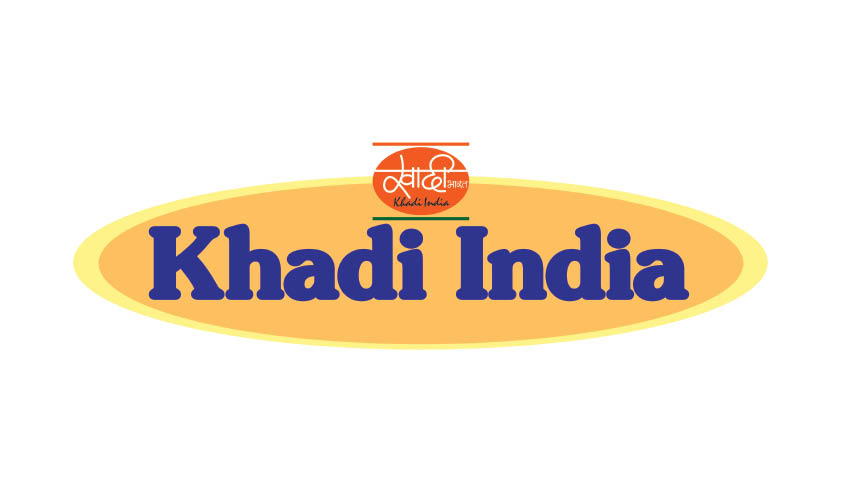New Delhi: From being seen as a fabric of Gandhian austerity to being a fashionably cool stuff, khadi has come a long way. No longer a fabric of the poor, it now attracts the best of fashion designers who invariably love to explore the fabric. But Vinai Kumar Saxena, Khadi and Village Industries Commission (KVIC) chairperson, believes that it is also gaining popularity for being eco-friendly. “It leaves zero carbon footprint. To manufacture one metre of khadi, you need to spend much less water in comparison to other fabrics. You can save billions of litres of water if you are using khadi,” he says.
Khadi may be the centre force of the KVIC’s agenda, but over the years it seems to have cracked the code of dealing with the three most significant scourges of our times—unemployment, terrorism and pollution. “The KVIC has created more than 20 lakh new jobs in the last five fiscals under the Prime Minister Employment Generation Programme,” Saxena says. He adds how innovative measures like bee keeping and kulhar (earthen pot) making have created employment in the country. “In Bihar alone, 6,000 bee boxes have been distributed by KVIC. Earlier, people were wary of putting bee boxes in their fields, fearing they would destroy their farm and also bite the farmers working there. But our studies suggest that farm productivity increases by 30% if bee boxes are placed there. Bees collect pollen nectar from about 3 km radius. So, when you place bee boxes in an area, you are not only making honey for yourself, but also benefiting the farmers in that entire radius.”
On the issue of terrorism, Saxena gives the example of KVIC working in Jammu & Kashmir. “In the Valley, we are working closely with the Army. In fact, it’s the Army that selects places for us to work. We have so far distributed 2,300 bee boxes in Kupwara district alone. It has changed the lives of 230 people there. By creating jobs, one can contain militancy,” says the KVIC chief as he recalls how a khadi training institute in Pampore is changing the mood in what was once the bedrock of terrorism. “We were warned by security forces not to visit Pampore, but when we insisted, they advised us to stay there for 10-15 minutes. We ended up
being there for three hours.”
Another institution the KVIC has revived is at Nagrota in Jammu, where a stitching centre for women of militancy-affected families was set up. “Hundreds of women earn their livelihoods at this centre,” adds Saxena.
However, it’s a papad unit in Varanasi that brings a big smile on the KVIC chief’s face. “Women walk 3-4 km along railway tracks to reach the workplace at 2.30 am. They knead dough for the next three hours to earn Rs 300 per day. A second batch of women start coming from 5.30 am to collect the dough, which they roll into papad at home,” he says. “These women have been trained by KVIC.”
According to Saxena, all the state offices of KVIC have been asked to adopt one village in their respective areas, where a sanitation and water conservation drive can turn them into model villages. The KVIC has adopted Qutubgarh, on the outskirts of Delhi, under its Swachhata Abhiyaan and besides maintaining the cleanliness of this village, it also takes care of the cleanliness of ponds there. “We are hopeful that soon people from Delhi would go to Qutubgarh to enjoy its water bodies,” he says.

Saxena’s love for water bodies goes back to his childhood. He recalls, “When I was young, my mother was the principal of a government inter-college near Chitrakoot. The place was blessed with a river and a sadhu stayed in a small hut along one of its streams. But when I went there recently, I was shocked to see a lot of construction work there. A big temple has taken the place of the small hut, blocking the flow of the streams.”
Plastic is another issue that KVIC is dealing with. “We have set up a mill in Jaipur. We are making hand-made paper bags out of waste plastic. A paper bag is made of 20% waste plastic that is collected from rivers, roadsides, etc. Plastic waste is destructured, degraded, diluted and used in these hand-made paper bags. We have made seven lakh bags so far. Jaipur’s nalas have got cleaned because of this exercise,” says Saxena and adds that the Dal lake in Srinagar, too, has been cleaned of the algae and the extracted waste has been used to make green paper bags. “Twenty-five children from Kupwara are being trained in Jaipur.”
The KVIC is also taking big strides in minimising the use of plastic by encouraging the production of kulhars and terracotta items. “Amethi has a lot of the Kumhar community. With the objective to empower them, we have trained and financially supported them in setting up kulhar-making units. In order to support them, plastic products have been replaced with kulhars and terracotta items in Rae Bareli and Varanasi railway stations. We have been setting up similar units at other places in the country,” says Saxena. He says that one small kulhar costs 40 paise and sells for Re1.
“On electric potter wheel one can make 700-800 kulhars a day. At 10% its cost, we distribute this machine, which has made the otherwise arduous task of kulhar making an easy affair. We have distributed such machines in as remote and distant areas as Leh and Ladakh to Manipur and Meghalaya,” Saxena says.

